Frontier Centre for Public Policy
The tale of two teachers

From the Frontier Centre for Public Policy
By Jim McMurtry
Some have criticized me for stating that the good, as well as the bad, of residential schools should be recognized. I stand by that statement…. Others have criticized me for stating that the Truth and Reconciliation Report was not as balanced as it should be. I stand by that statement as well.
At L.A. Matheson, a high school in Surrey, B.C., a poster in Annie Ohana’s classroom suggests society is too moralistic about sex work, the quote coming from an avowed Satanist. National Post writer Jamie Sarkonak described her classroom in this way: “The walls are covered with Social Justice posters. Some of them sloganeer about ‘decolonization,’ others ‘inflame racial politics.’” Ohana drapes herself in a Pride flag and speaks openly of her pansexuality as well as her subscription to wokeism, identity politics, Social Justice, and DEI.
In March Ohana appeared on CTV after being roundly criticized on X by an Ottawa teacher, Chanel Pfahl, the latter chased out of the profession a few years ago for questioning Critical Race Theory. Ohana said that Pfahl “seems to be making a lot of assumptions that were simply based on misinformation, lies, and in fact, puts myself and other teachers and students and my community in danger.” She also argued she was teaching about “critical thinking” and creating “empowered citizens that can speak up for themselves.” A Canadian flag hangs forlornly in her classroom, atop it is scrawled, “No pride in genocide.”
So far, she has faced no direct consequences for her political position or trying to indoctrinate her students. Indeed, she has won three teaching awards.
I, on the other hand, was walked out of my classroom and career for suggesting the only thing buried in Kamloops was the truth. In the eyes of my employer, I had put students and the community in danger by saying students who died while enrolled at a residential school did so from disease and not murder.
Northrop Frye wrote in The Great Code that the aim is “to see what the subject means, not to accept or reject it.” There is nothing wrong with the teaching of either me or Ohana as long as we are not steering students toward belief. In a 100-page investigation report on my teaching, an assistant superintendent of the Abbotsford School District wrote:
It in my view cannot be overemphasized that Mr. McMurtry having no knowledge of his students and more particularly whether any of these students had Indigenous descent in making his comments that provoked a strong student response and which was contrary to the school’s message of condolences and reconciliation. Regardless of his intent he left students with the impression some or all the deaths could be contributed to ‘natural causes’ and that the deaths could not be called murder or cultural genocide.
My fault was that I didn’t promote a “message of condolences and reconciliation.” Not only was this message never communicated to teachers, the message runs counter to the educational aim of seeing what a subject means. The message is also that the deaths of at least some Indian residential school children were attributable to murder, for which there is still no evidence.
Senator Lynn Beyak was the first prominent Canadian to wade into the increasingly turbulent waters of Indian residential schools. Labelled a racist and facing the prospect of ejection from the Senate, she retired in 2021 from her senate position but not from her convictions.
Some have criticized me for stating that the good, as well as the bad, of residential schools should be recognized. I stand by that statement…. Others have criticized me for stating that the Truth and Reconciliation Report was not as balanced as it should be. I stand by that statement as well.
George Orwell wrote in 1945 in an introduction to Animal Farm, “At any given moment there is an orthodoxy, a body of ideas of which it is assumed that all right-thinking people will accept without question. It is not exactly forbidden to say this, that or the other, but it is ‘not done’ to say it.” Queen’s law professor Bruce Pardy wrote last year: “A new standard of practice is emerging for Canadian professionals: be woke, be quiet, or be accused of professional misconduct.”
Annie Ohana is a better approximation of that mythically average teacher than I. Most teachers appear woke or know enough to be quiet and go along, standing for land acknowledgments, using individualized pronouns with students, speaking of gender identity and sexual orientation, distinguishing students based on race, reading Social Justice books over literary classics, and accepting revisionist history. They go to school wearing the right colour for the occasion: rainbow, pink, orange, red, or black. At staff meetings they are woke and quiet.
I am an avatar of Lynn Beyak, standing outside the orthodoxy and condemned by “all right-thinking people.” Our issue is also the same. Indian residential schools were not the genocidal project that federal members of parliament voted as a genocide on October 27, 2022.
The Truth and Reconciliation Commission, headed by two Indigenous men and a woman married to an Indigenous man, travelled for six years across Canada, and heard from 6000 former students. The Commission’s bias was evident in its final report:
Physical genocide is the mass killing of the members of a targeted group, and biological genocide is the destruction of the group’s reproductive capacity. Cultural genocide is the destruction of those structures and practices that allow the group to continue as a group. States that engage in cultural genocide set out to destroy the political and social institutions of the targeted group. Land is seized, and populations are forcibly transferred and their movement is restricted. Languages are banned. Spiritual leaders are persecuted, spiritual practices are forbidden, and objects of spiritual value are confiscated and destroyed. And, most significantly to the issue at hand, families are disrupted to prevent the transmission of cultural values and identity from one generation to the next. In its dealing with Aboriginal people, Canada did all these things.
What the final report does not mention is:
o the educational value of the schools;
o the alternative was no education at all in remote areas where a day school was not feasible;
o that both Indigenous chiefs and parents saw them as a treaty right and petitioned to keep them open into the sixties;
o that parents had to apply to send their children to residential schools;
o that the mandatory attendance which began in 1920 was to go to school (one-third going to day school, one-third to residential school, and one-third never going to any school);
o that the schools took in orphans and served as a refuge for children and in some cases adults who were abused on the reserve or without the necessities of life; and
o that many former students testified their time there was the happiest in their lives.
My natural allegiance is to fellow teachers, and I don’t doubt that Annie Ohana and others within the Critical Social Justice educational movement teach their students about critical thinking and create empowered citizens that can speak up for themselves. However, such critical thinking should also be directed against the orthodoxy these teachers are imposing on captive groups of students. As well, if their students are indeed empowered citizens, they should come to their own conclusions, no matter the ideological perspective of their teacher.
Jim McMurtry, PhD, was formerly a principal of Neuchâtel Junior College in Switzerland and a college lecturer, but mostly he was a teacher. He lives in Surrey, B.C.
Automotive
Carney’s Budget Risks Another Costly EV Bet

From the Frontier Centre for Public Policy
GM’s Ontario EV plant was sold as a green success story. Instead it collapsed under subsidies, layoffs and unsold vans
Every age invents new names for old mistakes. In ours, they’re sold as investments. Before the Carney government unveils its November budget promising another future paid for in advance, Canadians should remember Ingersoll, Ont., one of the last places a prime minister tried to buy tomorrow.
Eager to transform the economy, in December 2022, former prime minister Justin Trudeau promised that government backing would help General Motors turn its Ingersoll plant into a beacon of green industry. “By 2025 it will be producing 50,000 electric vehicles per year,” he declared: 137 vehicles daily, six every hour. What sounded like renewal became an expensive demonstration of how progressive governments peddle rampant spending as sound strategy.
The plan began with $259 million from Ottawa and another $259 million from Ontario: over half a billion to switch from Equinox production to BrightDrop electric delivery vans. The promise was thousands of “good, middle-class jobs.”
The assembly plant employed 2,000 workers before retooling. Today, fewer than 700 remain; a two-thirds collapse. With $518 million in public funds and only 3,500 vans built in 2024, taxpayers paid $148,000 per vehicle. The subsidy works out to over half a million dollars per remaining worker. Two out of every three employees from Trudeau’s photo-op are now unemployed.
The failure was entirely predictable. Demand for EVs never met the government’s plan. Parking lots filled with unsold inventory. GM did the rational thing: slowed production, cut staff and left. The Canadian taxpayer was left to pay the bill.
This reveals the weakness of Ottawa’s industrial policy. Instead of creating conditions for enterprise, such as reliable energy, stable regulation, and moderate taxes, progressive governments spend to gain applause. They judge success by the number of jobs announced, yet those jobs vanish once the cameras leave.
Politicians keep writing cheques to industry. Each administration claims to be more strategic, yet the pattern persists. No country ever bought its way into competitiveness.
Trudeau “bet big on electric vehicles,” but betting with other people’s money isn’t vision; it’s gambling. The wager wasn’t on technology but narrative, the naive idea that moral intention could replace market reality. The result? Fewer jobs, unwanted products and claims of success that convinced no one.
Prime Minister Mark Carney has mastered the same rhetorical sleight of hand. Spending becomes “investment,” programs become “platforms.” He promises to “catalyze unprecedented investments” while announcing fiscal restraint: investing more while spending less. His $13-billion federal housing agency is billed as a future investment, though it’s immediate public spending under a moral banner.
“We can build big. Build bold. Build now,” Carney declared, promising infrastructure to “reduce our vulnerabilities.” The cadence of certainty masks the absence of limits. Announcing “investment” becomes synonymous with action itself; ambition replaces accountability.
The structure mirrors the Ingersoll case: promise vast returns from state-directed spending, redefine subsidy as vision, rely on tomorrow to conceal today’s bill. “Investment” has become the language of evasion, entitlement and false pride.
As Carney prepares his first budget, Canadians should remember what happened when their last leader tried to buy a future with lavish “investment.”
A free economy doesn’t need bribery to breathe. It requires the discipline of risk and liberty to fail without dragging a country down. Ingersoll wasn’t undone by technology but by ideological conceit. Prosperity cannot be decreed and markets cannot be commanded into obedience.
Every age invents new names for old mistakes. Ours keeps making the same ones. Entitled hubris knows no bounds.
Marco Navarro-Genie is vice-president of research at the Frontier Centre for Public Policy and co-author, with Barry Cooper, of Canada’s COVID: The Story of a Pandemic Moral Panic (2023).
Business
Ford’s Liquor War Trades Economic Freedom For Political Theatre
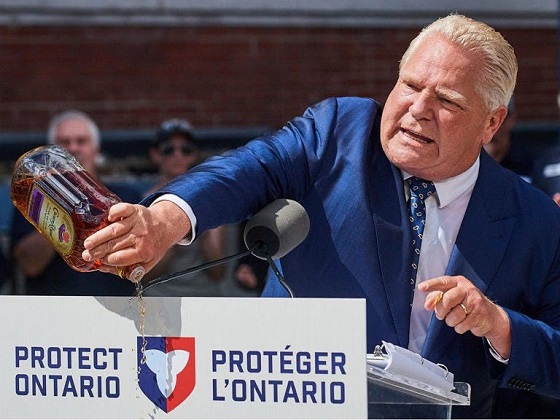
From the Frontier Centre for Public Policy
By Conrad Eder
Consumer choice, not government coercion, should shape the market. Doug Ford’s alcohol crackdown trades symbolic outrage for sound policy and Ontarians will pay the price
Ontario politicians have developed an insatiable appetite for prohibition. Having already imposed a sweeping ban on all American alcohol, Premier Doug Ford has now threatened to remove Crown Royal, Smirnoff and potentially other brands from LCBO shelves. Such authoritarian impulses reflect a disturbing shift in our political culture—one that undermines economic prosperity and individual liberty.
After Diageo, the multinational behind brands like Crown Royal and Smirnoff, announced in August that it would close its Amherstburg, Ont., bottling facility, affecting 200 workers, the political response was swift. NDP MPP Lisa Gretzky urged the government to retaliate by pulling Crown Royal from LCBO shelves. Days later, Ford dramatically dumped a bottle of the whisky during a press conference, signalling he might follow through.
Now, the premier has escalated the threat, vowing to remove Smirnoff and potentially other Diageo products.
These gestures may make headlines, but they come at a cost. They undermine business confidence, discourage investment, and send the wrong message to employers. More fundamentally, they reflect a poor understanding of how free societies settle disputes and make decisions.
To understand what’s at stake, it helps to consider the two basic mechanisms available to democratic societies: the marketplace and the ballot box. At the ballot box, citizens vote once, and majority rule determines a single outcome. The marketplace, by contrast, allows people to vote continuously with their dollars. Individuals make countless choices reflecting their own values and priorities. You get what you choose—without overriding anyone else’s preference.
There’s a role for government in correcting market failures, where there’s fraud, monopoly power or public risk. But banning legal products simply because of political displeasure with a company’s decision is not market correction. It’s coercion.
Diageo’s decision to close a facility may be unfortunate, but it doesn’t involve deception, unfair dominance, or harm to the public. Bans aren’t rooted in sound principle; they’re political, plain and simple.
Some argue the government is justified in acting to protect Ontario jobs. But that line of thinking is short-sighted. If job protection alone warranted banning products, we’d resist every innovation or trade deal that disrupted the status quo. Sustainable job growth depends on encouraging investment and innovation, not shielding every position from change.
The appropriate response to plant closures is policy reform, not retaliation. Ontario should focus on creating an environment where businesses want to invest and grow. That means fostering a stable, competitive business climate with clear rules, reasonable taxes, and efficient regulation. Threatening companies with bans only creates uncertainty and drives investment elsewhere.
With Ontarians spending $740 million annually on Diageo products, removing them from store shelves would impose real economic costs. Consumers would face fewer choices, weaker competition, and higher prices. Restaurants and retailers would be forced to adjust. The LCBO, Ontario’s government-run liquor retailer, would lose sales.
This isn’t hypothetical. The province’s ban on American alcohol is already projected to block nearly $1 billion in annual sales, while doing nothing to benefit Ontario consumers. The LCBO is serving political interests, not the public.
Supporters of such bans often reveal their lack of confidence in public opinion. Rather than persuade others to boycott a product voluntarily, they demand that government enforce a blanket restriction.
There’s a better way. Consumer-led boycotts offer accountability without coercion. They allow individuals to act on their beliefs without forcing others to comply. And they tend to be more effective, as companies respond faster to falling sales than to political theatrics.
But the issue at hand goes beyond liquor. It’s about whether elected officials should impose a single set of preferences on everyone, or whether citizens are trusted to decide for themselves.
Each new ban makes the next one easier to justify. Over time, these interventions accumulate and normalize government interference in private choice. Unlike consumer preferences, which can shift quickly and reverse, government prohibitions often persist. The LCBO’s century-old structure is evidence of how long some policies endure, even when they no longer serve the public interest.
This isn’t a call to eliminate government’s role. But it is a call for principled governance, the kind that distinguishes between legitimate oversight and overreach rooted in symbolism or political frustration.
Ontario’s government would do better to focus on long-term prosperity. That means building an economy where investors feel welcome, businesses can grow, and consumers are free to choose.
Ontarians are perfectly capable of making their own choices about which products to buy and which companies to support. They don’t need politicians like Ford making those decisions for them.
Conrad Eder is a policy analyst at the Frontier Centre for Public Policy.
-

 Business2 days ago
Business2 days agoTrans Mountain executive says it’s time to fix the system, expand access, and think like a nation builder
-

 International1 day ago
International1 day agoBiden’s Autopen Orders declared “null and void”
-

 MAiD1 day ago
MAiD1 day agoStudy promotes liver transplants from Canadian euthanasia victims
-
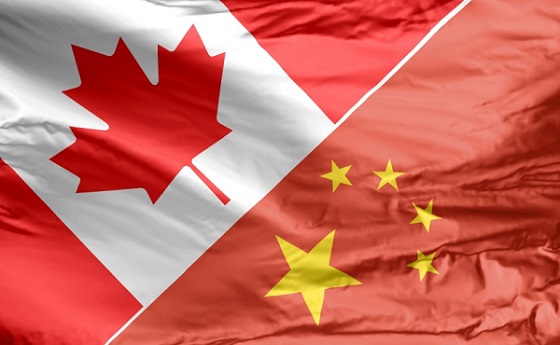
 Business1 day ago
Business1 day agoCanada has given $109 million to Communist China for ‘sustainable development’ since 2015
-
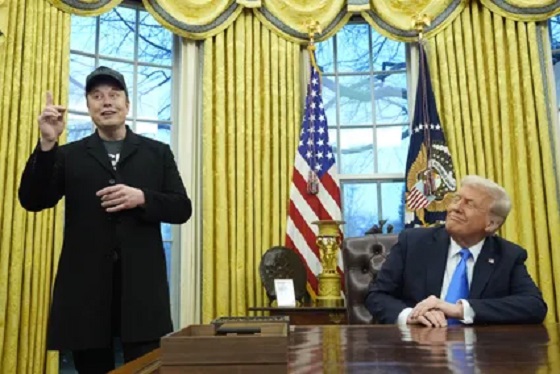
 Internet2 days ago
Internet2 days agoMusk launches Grokipedia to break Wikipedia’s information monopoly
-
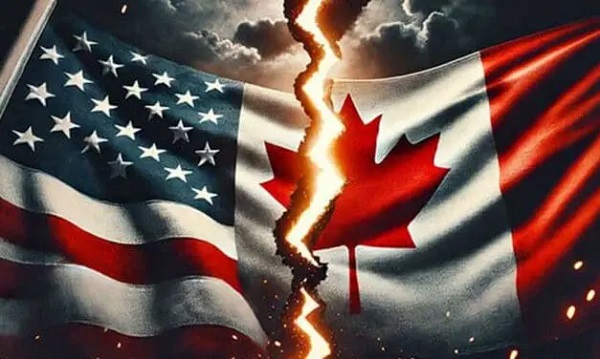
 Business1 day ago
Business1 day agoCanada’s combative trade tactics are backfiring
-

 Automotive1 day ago
Automotive1 day agoCarney’s Budget Risks Another Costly EV Bet
-
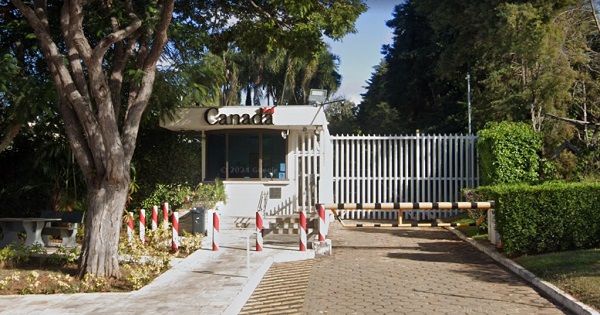
 Business1 day ago
Business1 day agoYou Won’t Believe What Canada’s Embassy in Brazil Has Been Up To





